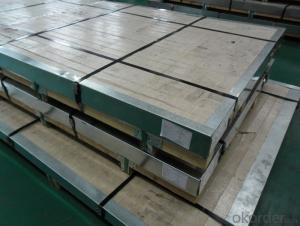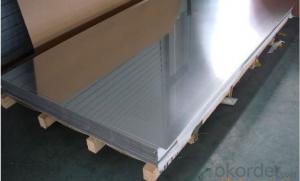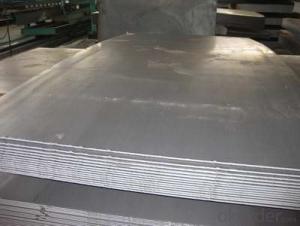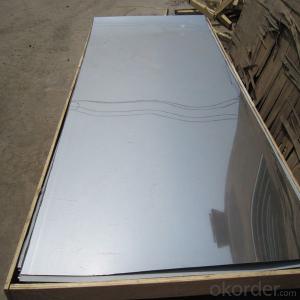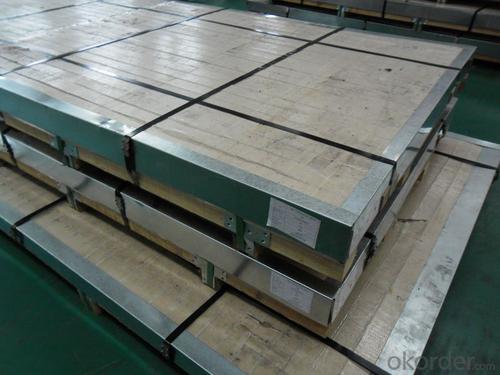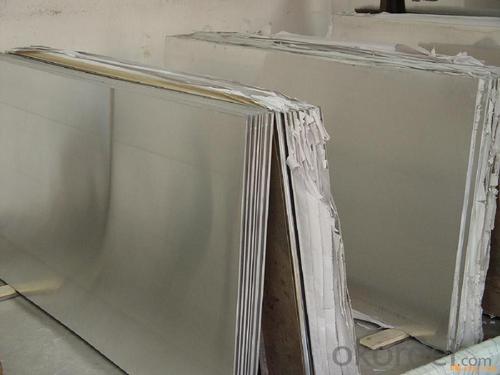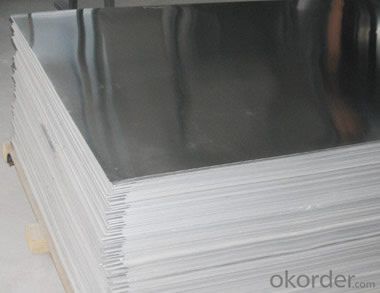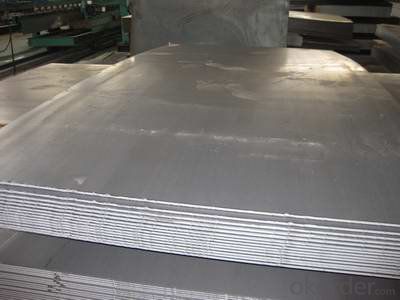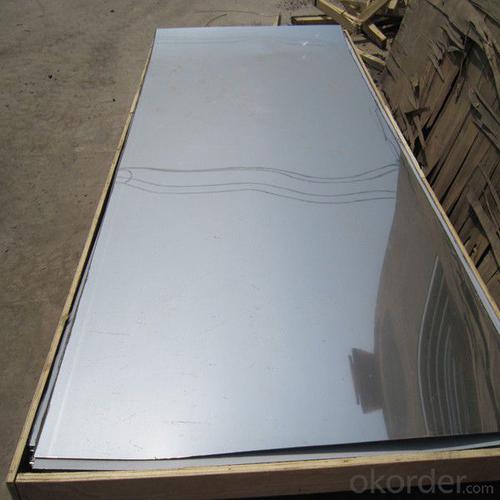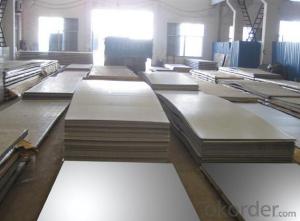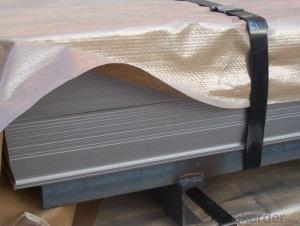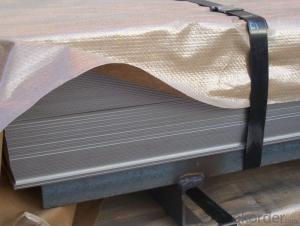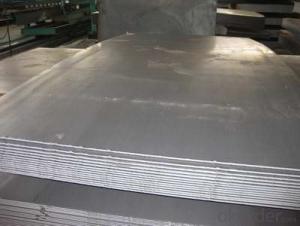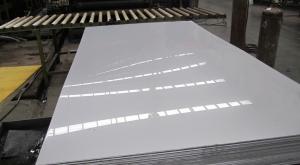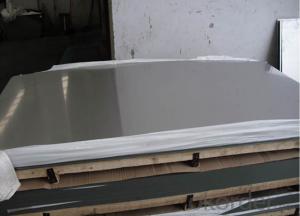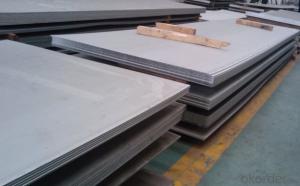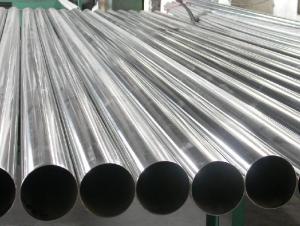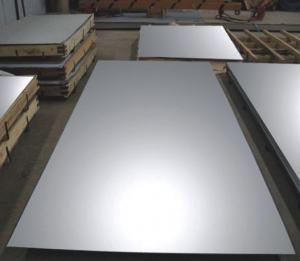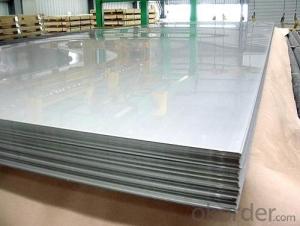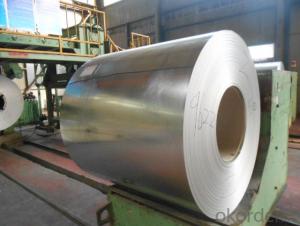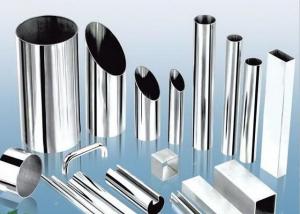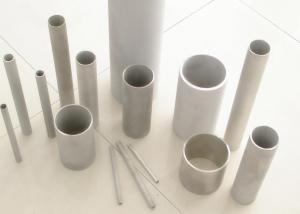Stainless Steel Sheet in 1mm Thickness with No.4 Surface Treatment
- Loading Port:
- Shanghai
- Payment Terms:
- TT OR LC
- Min Order Qty:
- 500 m.t.
- Supply Capability:
- 5000000 m.t./month
OKorder Service Pledge
OKorder Financial Service
You Might Also Like
Hot sale stainless steel sheet 201/202/304/304l/310S/309S/316L/316Ti/316/321/410/420/430/444/443/409L,and 904L.
Description of Stainless Steel Sheet:
Description | steel sheet,hot rolled steel sheet,cold rolled steel sheet, steel sheet,sheet,steel plate |
Standard | ASME, ASTM, EN ,BS,GB,DIN, JIS etc |
Application | Steel sheet applies to construction field, ships building industry, petroleum & chemical industries, war and electricity industries, food processing and medical industry, boiler heat exchanger, machinery and hardware fields. |
Packaging | Standard export sea-worthy packing |
Delivery time | 10-30 days |
Quality | No.1 |
Productivity | 500 tons/Day |
Note | Our company has cooperative relation between the domestic agents. Stainless steel sheet can be made accordingto the customers requirements. Fasten delivery. Quality assured. |
Contacts | If you have any question,please feel free contact me. |
Stainless steel sheet surface finish characteristics
Surface finish | Characteristics and application |
2B | The surface brightness and flatness of no2B is better than no2D. then through a special surface treatment to improve its mechanical properties,No2B could nearly satisfy comprehensive uses. |
No.1 | Polished with abrasive belt of grit#100-#200, have better brightness with discontinuous coarse stria, used as inner and external ornaments for building, electrical appliances and kitchen utensils etc. |
No.4 | Polished with abrasive belt of grit #150-#180,have better brightness with discontinuous coarse stria, but thinner than No3, are used as bathtub buildings inner and external ornaments electrical appliances kitchen utensils and food processing equipment etc. |
HL | Polished with abrasive belt of grit #150-#320 on the NO.4 finish and has continuous streaks, mainly used as buildings ornaments elevators, door of building, frontal plate etc. |
BA | Cold rolled, bright annealed and skin-passed, the product have excellent brightness and good reflexivity like mirror, kitchen apparatus, ornament etc. |
8K | The product have excellent brightness and prefer reflexivity can to be the mirror. |
Main Features of stainless steel sheet :
•Escalator, Elevator, Doors
•Furniture
•Production tools, Kitchen appliances, freezers, cold rooms
•Auto Parts
•Machinery and Packaging
•Equipment and Medical devices
•Transport system
Product Details:


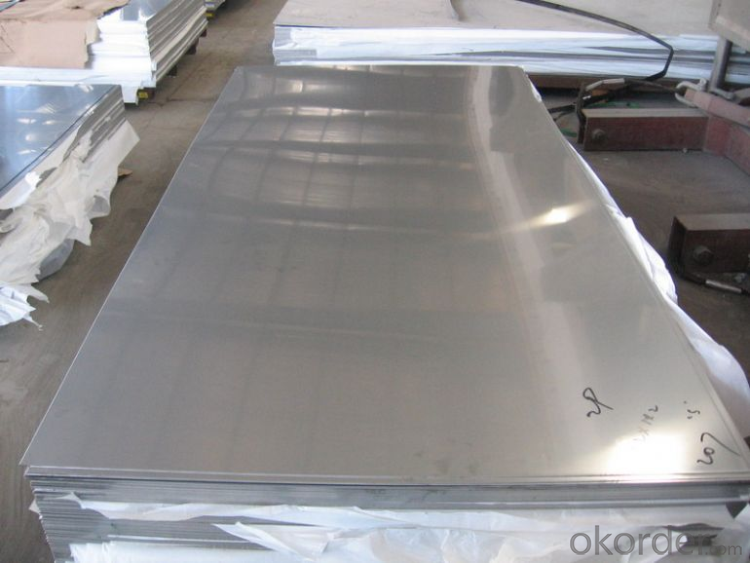
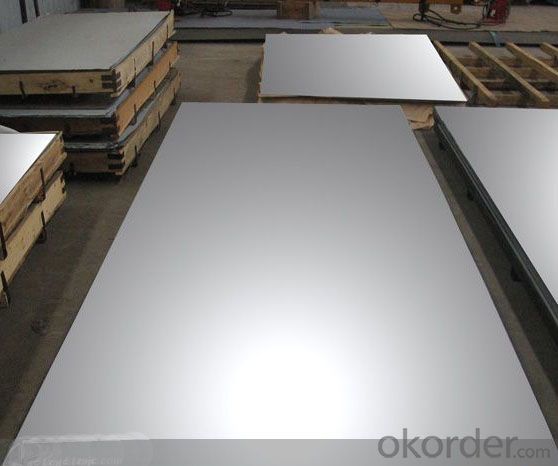
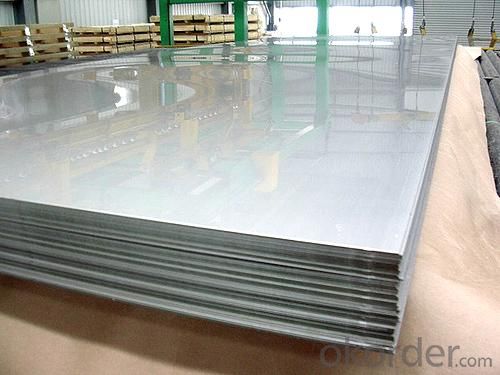
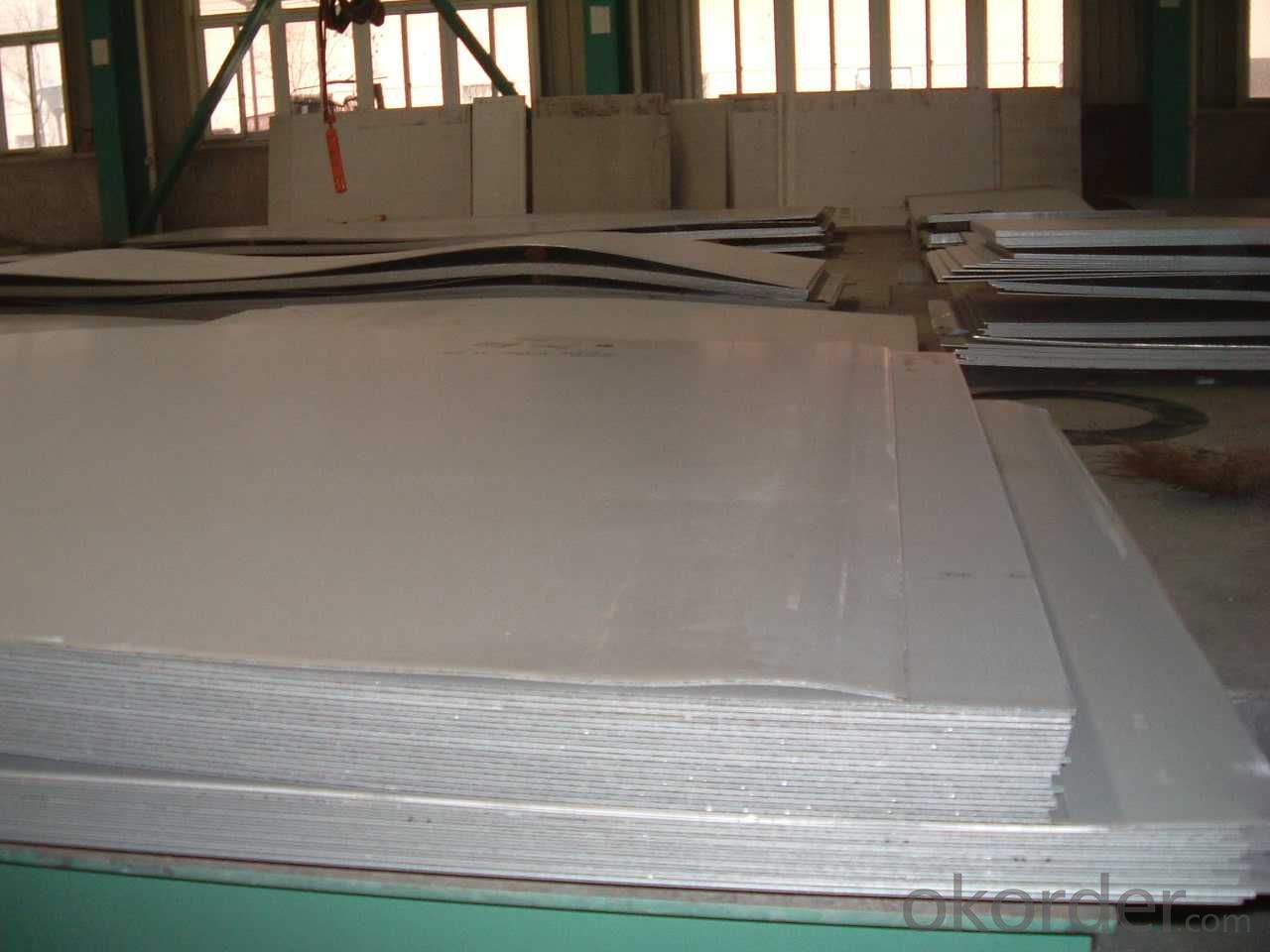

Cold Rolled and Hot Rolled:

Packing and Loading:

FAQ:
1. What's the quality?
Very fine, we have been exported to more than 30 countries.
2. How long get reply?
Usually within 24 hours
If you have any question about stainless steel sheets, do not forget to send the email to us! You will get the competitive Price and have a very good experience about the Buying Process! CNBM International Corporation is always your trustful friend!
- Q: What does "80 wire" stainless steel plate mean? How much more expensive than the average stainless steel plate?
- 80 silk is 0.8MM thick stainless steel plate, the price is almost the same
- Q: What are the different types of stainless steel sheet finishes for marine applications?
- There are several types of stainless steel sheet finishes commonly used for marine applications, including 2B, #4, and #8 mirror finishes. 2B finish is a smooth, matte finish with good corrosion resistance, while #4 finish has a brushed appearance and is commonly used for aesthetic purposes. #8 mirror finish is highly reflective and provides a polished, mirror-like appearance, often preferred for its decorative appeal.
- Q: What are the different types of stainless steel sheet coatings available?
- There are several different types of stainless steel sheet coatings available, including electroplated coatings, powder coatings, and organic coatings. Electroplated coatings involve the deposition of a thin layer of metal onto the stainless steel surface, providing enhanced corrosion resistance. Powder coatings involve the application of a dry powder that is then heated and cured to form a protective layer. Organic coatings, such as paints or lacquers, are also commonly used to provide corrosion resistance and improve aesthetic appeal.
- Q: Can stainless steel sheets be used for food packaging?
- Yes, stainless steel sheets can be used for food packaging. Stainless steel is a popular choice for food packaging due to its numerous advantages. It is a durable and strong material that provides excellent protection for food products. Stainless steel is also resistant to corrosion, making it safe for direct contact with food. Additionally, stainless steel is easy to clean and maintain, ensuring proper hygiene standards are met. Furthermore, stainless steel sheets can be easily shaped and formed into various packaging designs, allowing for versatility in packaging solutions. Overall, stainless steel sheets are a reliable and safe choice for food packaging applications.
- Q: Why do galvanized and stainless steel sheets buy more expensive than thin ones?
- Effects: galvanized steel sheet is to prevent corrosion of steel plate surface and prolong its service life, and the surface of steel plate is coated with a layer of metal zinc. This kind of zinc coated steel plate is called galvanized sheet.
- Q: Can stainless steel sheets be used for countertops?
- Yes, stainless steel sheets can be used for countertops. Stainless steel is a durable and versatile material that is resistant to stains, heat, and bacteria, making it an excellent choice for kitchen countertops. It is easy to clean, maintain, and has a sleek and modern appearance. Stainless steel countertops are commonly used in commercial kitchens but are also becoming increasingly popular in residential settings due to their durability and hygienic properties.
- Q: Stainless steel plate how to distinguish between good and bad, there are several thick?
- Similarly, in order to facilitate management, avoid confusion and prevent the use of accidents caused by confusion, the production plant in the material or packaging marked mark, batch number, status, specifications, quantity and production plant code and other signs. The markings to be drawn shall be consistent with the contents of the certificate of quality. There are three main methods: color logo (show the grade of color in the material provisions of parts with (in), print materials specified parts stamped or printed, to illustrate the types of materials, specifications, stove number, commonly used in large and medium thick steel plate or steel, listed above) (hanging in bundles or boxes of materials, indicating the designation, batch number, specifications, quantity and other signs).
- Q: Are stainless steel sheets suitable for electrical applications?
- Stainless steel sheets, indeed, prove to be a fitting choice for electrical applications. Their exceptional electrical conductivity and resistance to corrosion have made them highly favored for electrical components and equipment. They find extensive use in the fabrication of electrical enclosures, connectors, and terminals. Moreover, stainless steel sheets possess remarkable durability and longevity in electrical applications due to their ability to endure high temperatures and exhibit commendable mechanical properties.
- Q: How do you remove heat discoloration from stainless steel sheets?
- To remove heat discoloration from stainless steel sheets, you can try using a stainless steel cleaner or polish specifically designed for removing heat stains. Apply the cleaner to the affected area and gently rub it in using a soft cloth or sponge, following the grain of the stainless steel. Rinse with water and dry thoroughly. However, if the discoloration persists, it is recommended to consult a professional for further assistance.
- Q: Can stainless steel sheets be used for cryogenic storage containers?
- Yes, stainless steel sheets can be used for cryogenic storage containers. Stainless steel has excellent low-temperature properties, including high strength, corrosion resistance, and good thermal conductivity, making it suitable for storing materials at extremely low temperatures in cryogenic applications.
Send your message to us
Stainless Steel Sheet in 1mm Thickness with No.4 Surface Treatment
- Loading Port:
- Shanghai
- Payment Terms:
- TT OR LC
- Min Order Qty:
- 500 m.t.
- Supply Capability:
- 5000000 m.t./month
OKorder Service Pledge
OKorder Financial Service
Similar products
Hot products
Hot Searches
Related keywords
